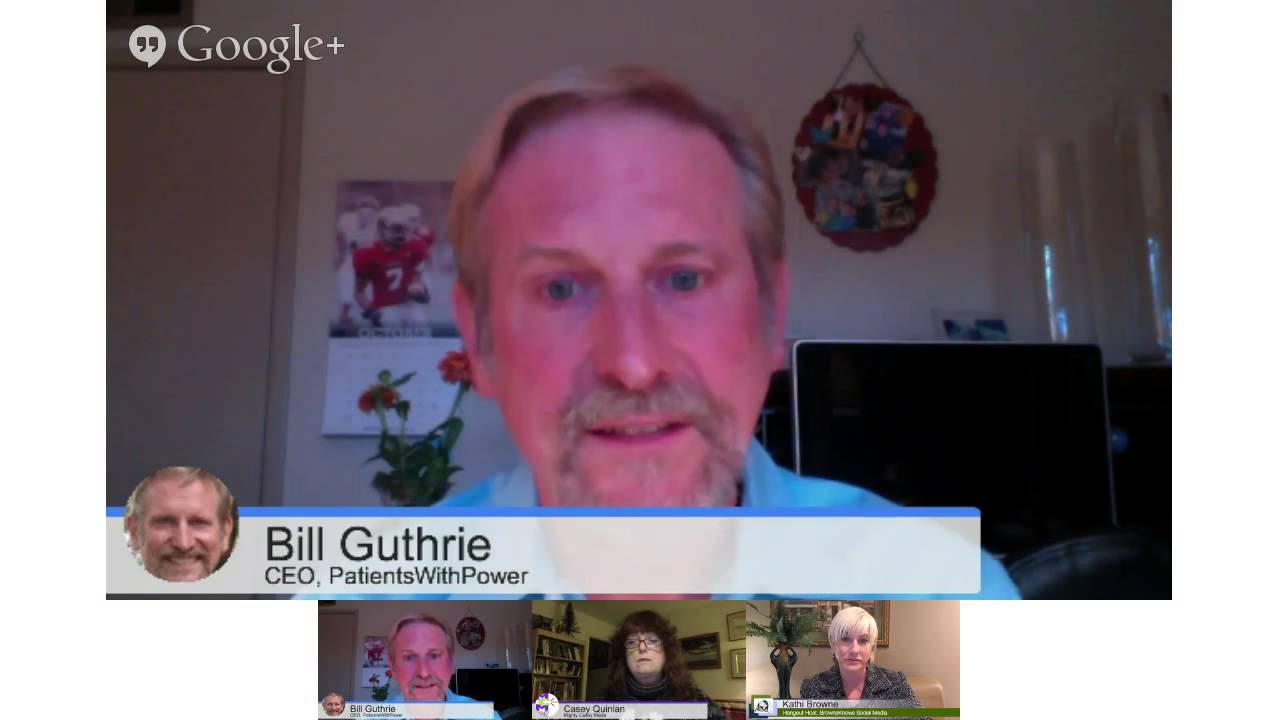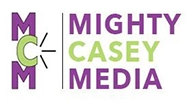As the author of a rabble-rousing call to action, with a heavy dose of humor, on managing medical care called Cancer for Christmas, I have some street cred on both cancer and on dealing with tough personal health conversations over a Christmas standing rib roast dinner. My hair has been on fire since I heard that Myriad Genetics had patented genes, back in the previous millennium. First, how in the pluperfect f^ck is a naturally-occurring part of the human body – microscopic or not – patentable?? Second, why is a commercial enterprise allowed to dictate scientific research at a university? If they’re funding it … maybe. If they’re trying to prevent it from moving forward? What. The. F^CK? I expect crass commercialism at Walmart. When it comes to cancer research, a primary profiteering motive should be a capital offense. Yep, off with their heads, baby. It recently came to my attention, thanks to my buddy BraveBosom‘s tip-off … Myriad created campaign: “Make hereditary cancer a holiday centerpiece.” Spamming #BRCA and #BCSM. http://t.co/PrC0E3rIeK — Brave Bosom (@BraveBosom) December 19, 2013 … that the trolls at Myriad Genetics are up to newer, stinkier tricks: “helping” us make cancer a holiday centerpiece! Hey, Myriad, here’s a tip: WE DON’T TRUST YOU. You’re trolls. Support from you? I’d sooner eat dinner with Hannibal Lecter. If you haven’t heard of Myriad Genetics, here’s the Cliff’s Notes version: Founded in Salt Lake City in 1992 by, among other names, a Nobel Prize winner in chemistry, Walter Gilbert In 1997, Myriad is granted a patent on BRCA1 (one of two genes that indicate high risk of breast and ovarian cancer) In 1998, Myriad is granted a patent on BRCA2 (2nd of two breast cancer risk genes) BRCAnalysis, the company’s genetic test for breast cancer risk, costs $4,000 (you can get an entire genomic sequence for less than that – the Myriad…
Unless you’ve been living under a rock since October 1, you’ve heard that Healthcare.gov, the site where Americans can shop for health insurance, had a rocky start in life. OK, it was an epic mess. I was one of the people who was eager to jump on the site on October 1, since I haven’t had health insurance since I completed cancer treatment in 2008. That cancer diagnosis and treatment put me in the pre-existing condition pile, which put renewal insurance premiums for my individual coverage at an eye-popping level. You can read the details on that here. On October 1, I hopped on my Mac, and surfed over to Healthcare.gov … and had the same experience everyone else seemed to be having: That continued over the following seven days, with me developing a nice little flat spot on my forehead from head/desk-ing my way through many attempts per day at getting past the first step of creating a profile on the site. Even when I had completed that process of creating a profile, every time the site announced “Success! Click here to continue.” I clicked “there” and … got a blank page. On October 8, I realized that I, and the site’s developers, might have missed something. I was using Google Chrome, my default browser, and the dominant browser across the web. Could it be that the dim bulbs that built the Frankenstein that is the Healthcare.gov site optimized the site only for native browsers? I opened Safari, and discovered that yes, they were indeed that dim, because even though the site loaded at the speed of a slug on Quaaludes, it did load. And “Success!” allowed me to continue the enrollment process. No blank pages. I re-enacted scenes from 1995, when I would log on to Netscape to download email…
This story from PBS Newshour clearly shows how important it is to ask questions, and shop around, when it comes to prescription drug prices. Think a generic drug guarantees a lower price? Not so much. Watch this story, and learn how the same generic drug can cost anywhere from $11 to $455. The best way to get the lowest price? The same way you shop for shoes, or appliances: research online, ask local retailers, and make an informed decision.

I had the chance to participate in a Hangout on Air with Kathi Browne, who is the founder/moderator of the Google+ Healthcare Talk community. If you’re on G+ and in the healthcare industry, that community is one you want to join – lots of discussion on topics from healthcare policy to social media to patient safety to care quality. It’s invitation-only – if you’d like to join, hit the G+ link above and ask Kathi to add you to the community. Last night’s (Monday, Oct. 28, 2013) Hangout on Air was a conversation with Bill Guthrie, CEO of Patients with Power, a new web-based platform for shared decision-making for cancer patients and their oncology teams that’s in beta at UCSF’s lung cancer oncology unit and also as a survival-planning tool at Cornell-Weill/New York Presbyterian’s ob-gyn onco unit. Decision-making for cancer patients – shared, or not – is a firehose. Patients with Power does what its name promises, it gives patients access to the information they need to make an informed decision, information that’s solidly based in evidence-based medicine since it’s based wholly on National Comprehensive Cancer Network (NCCN) guidelines for cancer treatment. Bill has given me a demo of the tool, and it’s superb. He also did a walk-though last night. Give a watch/listen: //www.youtube.com/embed/FPTIjDwirDI
The firehose of amazeballs ideas and connections that was Stanford MedicineX is now over two weeks back in my rear-view mirror. That does not mean that my head has not been on fire ever since, chewing on all the data that got packed into my cranium in those three days. If you want to read a recap of the joyful noise that was those days, it’s over on MightyCasey.com. A forest fire between my ears has flared up with this thought: all the “big idea” thinking that happens when smart people gather to talk the future of healthcare is terrific. How can that be translated, today, into actual care improvement for the average human? Not just ePatients, but just-plain-folks? How can we start little centers of excellence in a free clinic for undocumented workers in the South Bronx, or in a village in AIDS-ravaged sub-Saharan Africa? Is there an app for THAT? I often feel myself at the crossroads of Possible and Are You F***ing Nuts. In other words, I dream of smartphone apps that could help a little boy in Ghana avoid getting malaria. I could lose an hour wondering how an app might help a little girl in Pakistan avoid a forced marriage at 12. As I type this, I’m thinking of how the kids in the public housing projects of the small city where I live could really use some how-to-manage-your-healthcare apps they’d be able to relate to. And the smartphones to go with them, of course. Is there an app for THAT? The grass, and its roots, are where we all stand. Healthcare, like charity, needs to begin at home. How do we help that happen? How do we empower children, and their parents, to understand how to interact with the healthcare system when so many of them are…

I had the great good fortune of being tagged as an ePatient Scholar for the 2013 edition of Stanford Medicine X. That allowed me to sit at the feet – literally, since the ePatients were the mosh-pit for the three day conference plenary stage – of some of the best and brightest minds in healthcare. And guess what? Many of those best/brightest were … PATIENTS. MedicineX (a/k/a MedX and #medx) is the uber Patients Included medical conference. It grew from seeds planted at conferences like Health 2.0 and Patients 2.0, for which seeds-to-beautiful-flowers gardener credit goes to Dr. Larry Chu and his team from Stanford Anesthesiology AIM Lab, who seem to prestidigitate rabbits out of hats without breaking a sweat. Or the hats. Or the rabbits. MedX – in my opinion, at least – trumps every other Patients Included event by not just including patients, but by putting them front and center throughout the program. In fact, I cannot think of a session that I attended that didn’t have someone who was there primarily as a customer of healthcare (commonly called “a patient”) on the platform, presenting or participating in a panel discussion. My ePatient socks were knocked off from jump thanks to the opening keynote by Michael Seres and Marion O’Connor on “The New Engaged Patient,” which was the morning keynote on Friday. Michael uses his blog as his personal health record, up to and through a lifetime battle with Crohn’s disease that led to his becoming the 11th patient to ever receive a bowel transplant, and only the 6th to survive that transplant experience. Michael is hilarious, and Marion is exactly the sort of caring brainiac any patient would like bedside as s/he battled a life-threatening illness. Here’s the video of their session: The rest of the day played out as a firehose of ePatient awesome,…
Welcome to the MightyCasey–hosted edition of the HealthWorksCollective #HCSM Review, a peer-reviewed compendium of timely, on-topic writing about healthcare from across the web. Last Friday, I put out a call for posts about healthcare costs and/or health insurance innovation for the HCSM community. Here’s the brain candy that flew over the MightyCaseyMedia transom: First up: an examination of STD occurrence alongside STD testing costs in the New York metro area from ClearHealthCosts.com (@chcosts), written by Sherry Mazzocchi. This is a deep dive into the incidence of STDs across New York City, with snapshots of what consumers actually pay for STD testing at a number of facilities across the region. Runs from $0 (for members of a subscription medical practice) to $600 for women who visit a Westchester County practice. Like Uwe Reinhardt has said for years, healthcare pricing is chaos behind a veil of secrecy. For patients looking to pierce that veil and direct-pay for their care, ClearHealthCosts’ founder Jeanne Pinder offers up this post – New ways of paying: Cutting out the middleman. Seems like everybody’s looking for a better way to hold down health costs. In a number of cases, that means patient and provider are getting together directly, without the middleman (the insurance company). You could start asking, “How much is that?” and acting on the answer. With Oct. 1 and the dawn of the ACA’s new health insurance marketplaces, Jeanne Pinder shares What it means to you: Oct. 1 and buying health insurance. Maybe you avoid the topic of health insurance, but you can’t any longer. If you’re not covered by employer insurance, Medicare or Medicaid, you will need to know things about buying insurance (or choosing not to buy it). Her post offers some actionable advice on how to figure out what the marketplace means to you. From one of my…
John Green of vlogbrothers breaks down why healthcare costs in the US are so crazy. (Hey, John – I feel dizzy, too!)
This story from PBS Newshour clearly shows how important it is to ask questions, and shop around, when it comes to prescription drug prices. Think a generic drug guarantees a lower price? Not so much. Watch this story, and learn how the same generic drug can cost anywhere from $11 to $455. The best way to get the lowest price? The same way you shop for shoes, or appliances: research online, ask local retailers, and make an informed decision.

It was recently revealed that an Excel error contributed to the European fiscal crisis, and a continuing global economic recession/depression. Paul Krugman called the revelation the Excel Depression in the NY Times. Certainly lives are at stake when the success or failure of large economies are at risk, but not nearly as many lives as are at stake every day given the lack of transparency (and even, in some cases, plain truth) in bioscience research and medical outcomes reporting. Ben Goldacre gave a barn-burning TED talk, “Battling Bad Science,” in 2011. He gave another one in 2012 in which he called the data manipulation in scientific research the “cancer at the core of evidence-based medicine.” His point? We cannot make a meaningful decision in the absence of ALL the data. Tim Berners-Lee, the man who invented the actually-useful-to-humans WWW part of the Internet, has consistently called for raw data – ALL the raw data – NOW. Paul Levy, the former CEO of Beth Israel Deaconess Hospital, recently blogged about the failure of the Journal of Pediatric Surgery to reveal, in a report on a surgery for sunken-chest deformity, a widely-reported death of a teenage boy after said surgery, even though that boy’s case is used as an example of avoidable medical error in safety bootcamps for medical interns and residents. Boggles the mind, doesn’t it? Even if the data is fully reported, the PR geeks who write up the announcement of results might get that report 100% wrong. Witness the recent contretemps over a University of Chicago study on patient engagement, shared decision-making, and healthcare cost control. A full outline of that mess, by ePatient Dave deBronkart in Forbes, will give you 411 on that story. The Cliff’s Notes: it was a post-discharge survey, not a full study; it measured attitudes, not outcomes; and the press release was sent out on…



